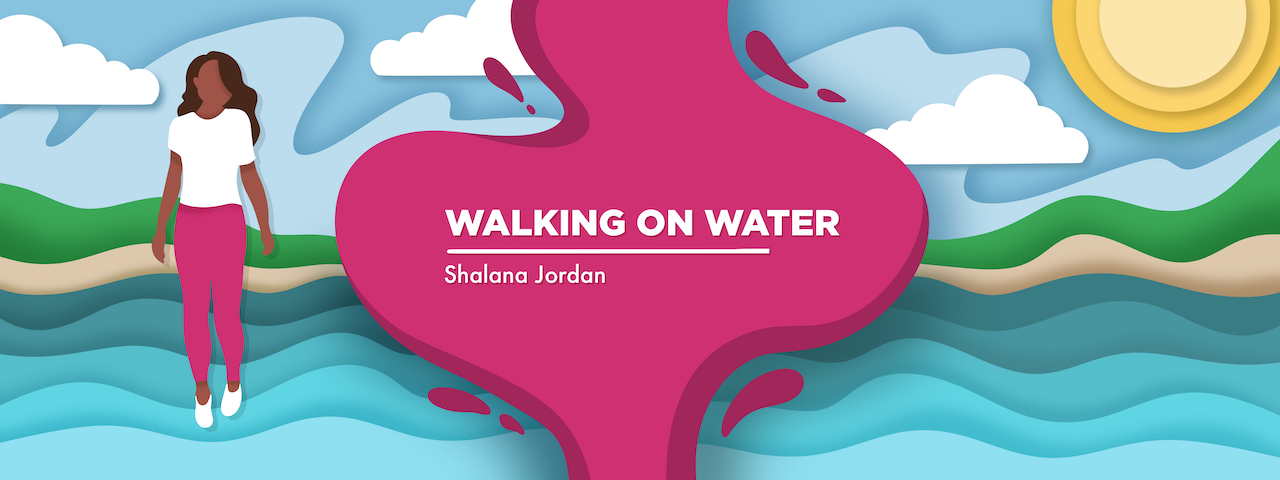How My Miraculous Health Journey With aHUS Began
In her debut column, Shalana Jordan describes her long road to diagnosis

“You’re dying.”
That was my first introduction to atypical hemolytic uremic syndrome (aHUS). I didn’t have a diagnosis yet, but that’s how my journey began.
Rewind to April 2020, when my family had COVID-19. My oldest child was very sick, but my youngest child and I had zero symptoms. Remember that for later.
My oldest recovered after four weeks. I developed seemingly unrelated symptoms that I easily found excuses for. I had mysterious bruises — but I’m anemic. I was exhausted all the time — but I have lupus, and I was working more than 10 hours a day, remodeling my first home independently, and raising two boys alone. My back hurt constantly — but I had an hour commute to and from work. All normal right?
This went on for months, and by September, I felt awful. I was covered in bruises, taking Advil like candy, and had no appetite. In two weeks, I lost 17 pounds, couldn’t catch my breath, my legs were going numb, and I nearly blacked out several times. I assumed I had COVID-19.
On the final day before going to the hospital, I spiked a fever of 104 degrees and was throwing up blood. I figured OK, I’ll go to the doctor tomorrow. That morning, I started a movie for the boys while I tried to shower. Too weak to stand, I sat on the shower floor. Afterward, I lay on my bed facedown for two hours, sucking in shallow breaths while trying to gain the strength to get going.
I distinctly remember that this was the pivotal moment when I thought my life might be in danger. So my babies and I headed to our hospital.
The hospitalization
Living in a new city, I hardly knew anyone, so the boys were in the ER with me running amuck, hitting the phlebotomist in the head with paper airplanes, flirting with pretty nurses — it all seemed silly and lighthearted. Until I set off an alarm when my blood pressure spiked to 245/165 mmHg. Apparently, that warrants lights and blaring alarms.
Back to the “you’re dying” part. The boys’ paternal grandparents drove three hours to get them. I burst into tears when Grandma walked into the room. “I’m dying and I have no idea what’s going on and they don’t know if they can save me,” I told her through my sobbing. The doctor told her I had to go, and I was whisked away to the “Heart Tower,” the ICU at Prisma Health Richland Hospital in Columbia, South Carolina.
I was in the ICU and, eventually, a lower floor for nearly two months experiencing multiorgan failure. I did dialysis, plasmapheresis, and antibody therapy, and had kidney biopsies, meningitis vaccines, and 18 blood transfusions. My doctors tried to explain it as though COVID-19 had triggered such a severe immune response that my immune system was attacking my own blood.
Waiting months to seek medical care that I couldn’t afford nearly cost me my life.
Now I live with stage 4 kidney disease, May-Thurner syndrome, severe anemia, hypertrophic cardiomyopathy, and hypertension. I also needed a hysterectomy after a nine-month menstrual cycle triggered by aHUS, and I’ll be doing antibody therapy for the rest of my life. (I have the rarest gene mutation of aHUS, meaning I’ll need antibody therapy forever.)
I also fell during all of this and punctured my liver, leaving a hematoma that is still present today. I needed dialysis for five months in total.
What I’ve gained
As shocking as my story sounds, this is exactly how many aHUS journeys begin. One day you’re healthy and thriving, and the next day your life is changed forever — if you survive.
Antibody therapy gave my kidneys a break long enough for them to recover from 5% to 17%, and I was able to end dialysis! This was huge for me. I was the first person my nephrologist had ever seen who ended dialysis.
I was the second-longest-staying patient at my hospital. And my gene mutation only occurs in 5% of the 1-2 per 1 million patients with aHUS.
Do I get angry? Is life challenging in completely new ways? Did I lose most of my material possessions? Yes!
But even in the darkness, I’m reminded of what I’ve gained. This new normal has afforded me the opportunity to stay home with my kids, something I never would’ve done otherwise. I’ve become medically knowledgeable about so much in the rare disease community and the women’s health community. I’ve helped and encouraged several patients dealing with the same struggles as I am. And I have the time to travel now.
Who ever would have thought that this awful disease could give anyone something? Even with my ups and downs, I feel like I’ve been given the opportunity to Walk on Water — because surviving what I have is nothing short of miraculous.
Note: aHUS News is strictly a news and information website about the disease. It does not provide medical advice, diagnosis, or treatment. This content is not intended to be a substitute for professional medical advice, diagnosis, or treatment. Always seek the advice of your physician or other qualified health provider with any questions you may have regarding a medical condition. Never disregard professional medical advice or delay in seeking it because of something you have read on this website. The opinions expressed in this column are not those of aHUS News or its parent company, Bionews, and are intended to spark discussion about issues pertaining to aHUS.








Leave a comment
Fill in the required fields to post. Your email address will not be published.